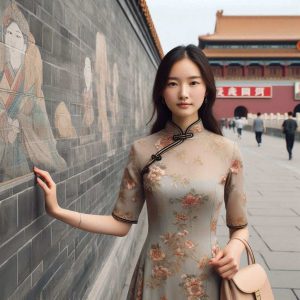 Traditional Chinese women’s clothing is more than just fabric and design. It tells stories of power, identity, and politics. Over centuries, Chinese dress (source: robe chinoise) has reflected not just personal style but also rules set by the state. From emperors to revolutionaries, clothing has always played a role in shaping the image of women in society.
Traditional Chinese women’s clothing is more than just fabric and design. It tells stories of power, identity, and politics. Over centuries, Chinese dress (source: robe chinoise) has reflected not just personal style but also rules set by the state. From emperors to revolutionaries, clothing has always played a role in shaping the image of women in society.
Clothing as a Political Tool in Imperial China
During the imperial era, women’s clothing followed strict rules. What a woman wore depended on her family’s social status, her husband’s rank, and the dynasty in power. The government controlled clothing to show the class structure. The higher your rank, the more decorated and colorful your clothes could be.
The Hanfu, worn during the Han dynasty, was a symbol of cultural pride. It featured wide sleeves, long skirts, and sashes. Later, during the Qing dynasty, the Qipao or Cheongsam appeared. It was a more fitted dress, influenced by the Manchu rulers. The Qing government made this style more common among women to promote a unified look under their rule.
Clothing rules during these times weren’t just about fashion. They were about showing loyalty to the emperor and your role in society. Women who broke dress codes could face punishment, especially in the royal court. In this way, clothing became part of political control.
Revolution, Reform, and the Shift in Style
The fall of the Qing dynasty in 1911 led to major political changes. Along with it came new ideas about women’s rights and independence. Clothing also changed. The Qipao became shorter and more modern in the early 20th century. It was no longer just for noble women. Teachers, office workers, and students started wearing it too.
During the 1950s and the rise of the People’s Republic of China, traditional clothing was pushed aside. The Communist government promoted simple, practical clothing like the Mao suit, which had no class markers. Everyone, including women, was encouraged to dress the same. This was meant to show equality and unity, removing the divide between rich and poor.
But this change also erased many aspects of traditional Chinese identity. Embroidered silks and handcrafted designs were replaced by plain, factory-made clothes. Clothing became a political statement. Wearing something too “bourgeois” could lead to criticism, or worse, punishment.
Clothing, Identity, and Women’s Rights
As the country opened up in the late 20th century, traditional clothing slowly came back. Some women began wearing Qipaos again for special events or cultural festivals. Others used Hanfu as a way to connect with China’s long history.
In recent years, young women in China have taken a new interest in Hanfu. For some, it’s a form of cultural pride. For others, it’s a quiet protest against fast fashion and Western trends. Wearing Hanfu today can mean wanting to reconnect with deeper roots and values.
But it’s also political. Choosing to wear Hanfu is a way of saying, “We remember who we are.” It’s not just about looking pretty. It’s about reclaiming tradition and shaping identity in a modern world. This movement has sparked debates online, especially around who gets to wear these clothes and what it means for national pride.
Global Influence and Modern Politics
Traditional Chinese clothing now appears in global fashion shows, films, and cultural events. Designers mix Qipao styles with modern materials. Celebrities wear Hanfu-inspired outfits on red carpets. This global attention brings both pride and concern. Some feel that traditional styles are being copied without respect for their meaning.
China’s government also supports cultural exports. Promoting Hanfu or Qipao in festivals and tourism campaigns helps shape a positive image of the country. It becomes a soft power tool—using culture to influence how others see China.
At the same time, some critics argue that this focus on tradition can cover up real issues, like gender inequality or censorship. They say using traditional women’s clothing as a symbol of national pride shouldn’t stop conversations about modern rights and freedom.

 Cities, at their core, are communities where people live, work, and strive to thrive. But in the rush of modern urban life, wellness often takes a back seat. From chronic stress and mental health challenges to limited access to quality care, city residents face mounting obstacles. That’s why local governments are increasingly being called upon—not just
Cities, at their core, are communities where people live, work, and strive to thrive. But in the rush of modern urban life, wellness often takes a back seat. From chronic stress and mental health challenges to limited access to quality care, city residents face mounting obstacles. That’s why local governments are increasingly being called upon—not just